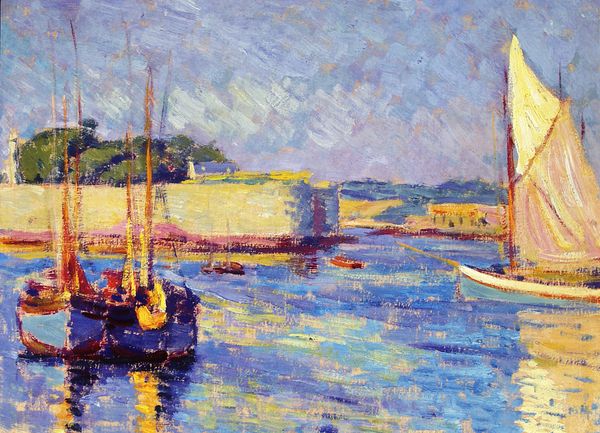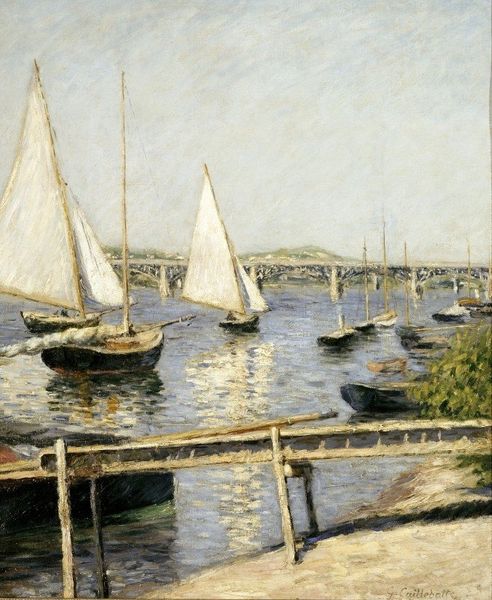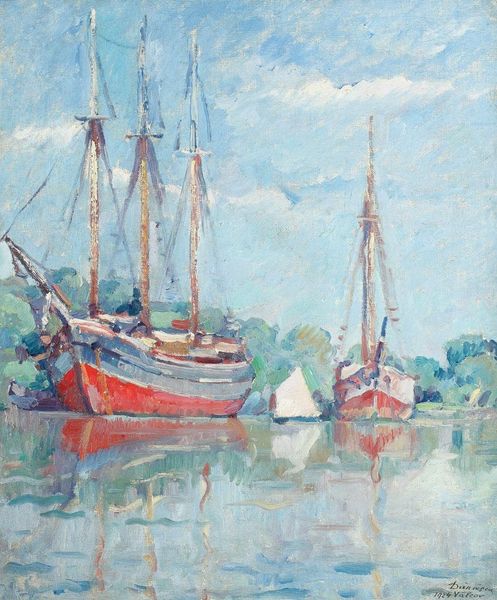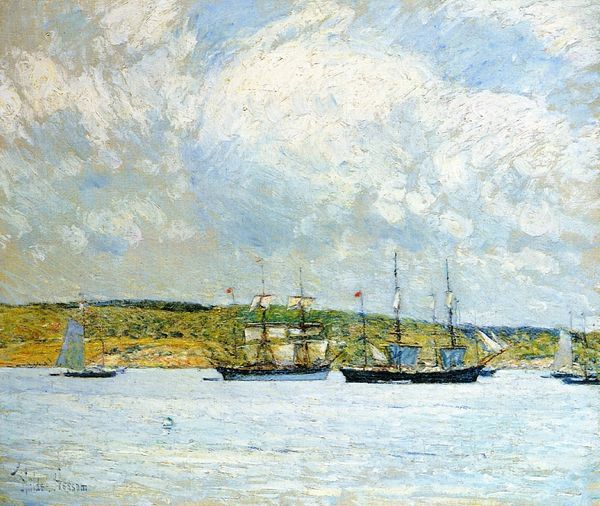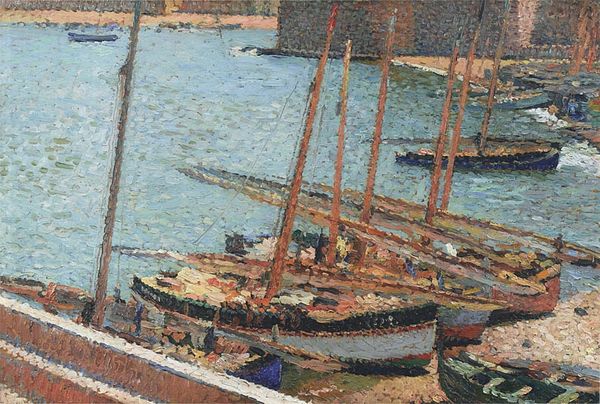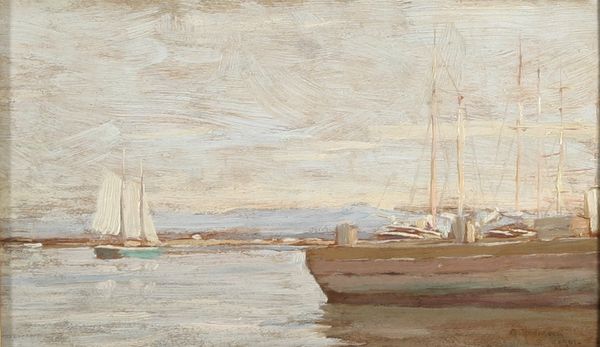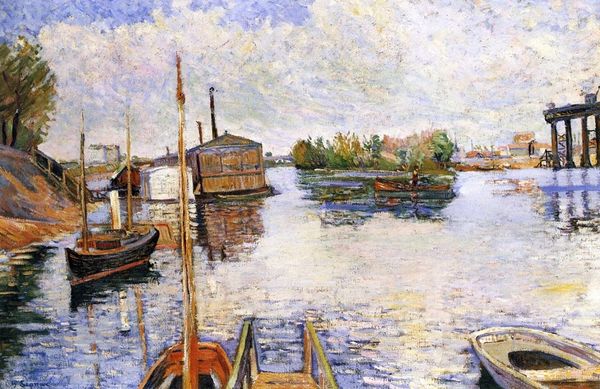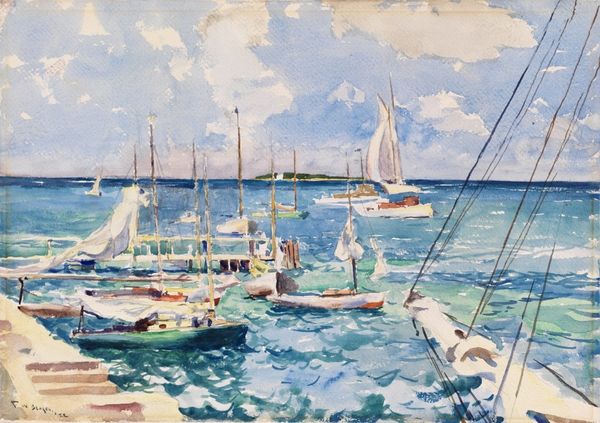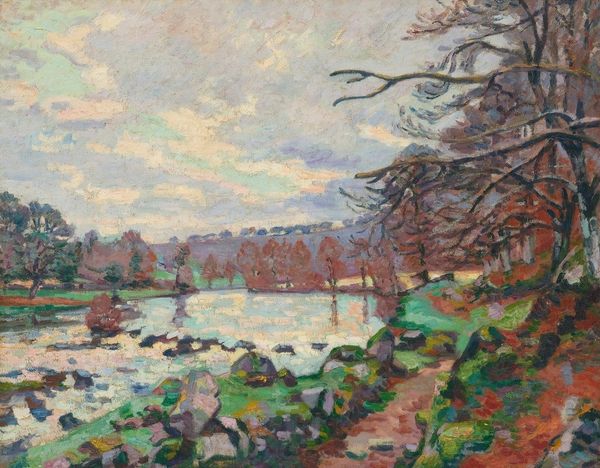
Copyright: Public Domain: Artvee
Curator: Painted in 1902 by Childe Hassam, "The Harbor" presents us with an evocative scene rendered with oil on canvas. Editor: Immediately, I’m struck by how thickly the paint is applied; look at those impasto strokes creating texture in the foreground. You can almost feel the rough-hewn timbers of the docks. Curator: Hassam was, of course, a key figure in American Impressionism. "The Harbor," I think, carries a very particular visual echo of leisure and the cultural values attached to such leisurely settings. Editor: The brushwork gives an ephemeral sense to the composition, though. The dock timbers and the boats bleed together through broken touches of color, yet that contributes to how the materials express the transience of life. It evokes a feeling more attuned to real experiences. Curator: Think about the placement of the boats too; Hassam very consciously arranged their positions and used color theory in order to invite viewers into this space. These white yachts conjure up the aesthetic of wealthy leisure activity, so often on display in this period of robust industrialization. It is about showing social class, an element frequently visible throughout art history. Editor: And yet, doesn’t that foreground suggest a certain industry too? Those pilings must’ve required considerable effort to construct and install. Curator: It also signifies transition. Harbors were conduits, passageways both into and out of a place. There is movement within stasis—that constant potential for departure and, or arrival, ingrained into its symbolism. It resonates deeply. Editor: Indeed, the visual language here shows the materiality as part of the economic processes that underpin these communities and that even something ostensibly as simple as boat construction involves a whole ecosystem of laborers and trades. Curator: What a wonderful observation of how the means of aesthetic and commercial labor intermingle. Editor: And those materials, from the oil paint to the dock timbers, are such active signifiers. Curator: Hassam clearly leaves us plenty to think about—on many symbolic levels.
Comments
No comments
Be the first to comment and join the conversation on the ultimate creative platform.
